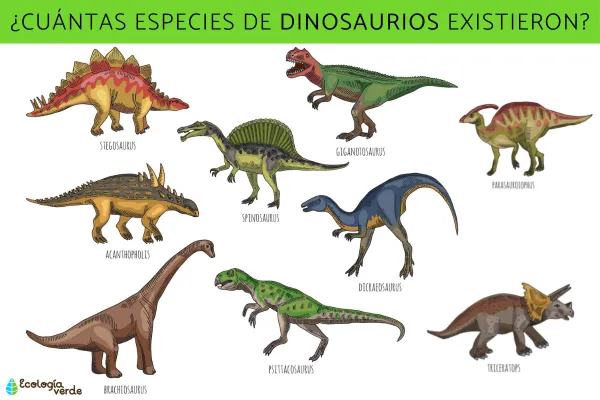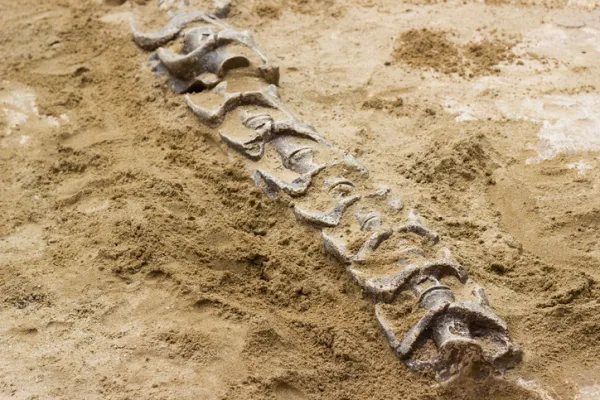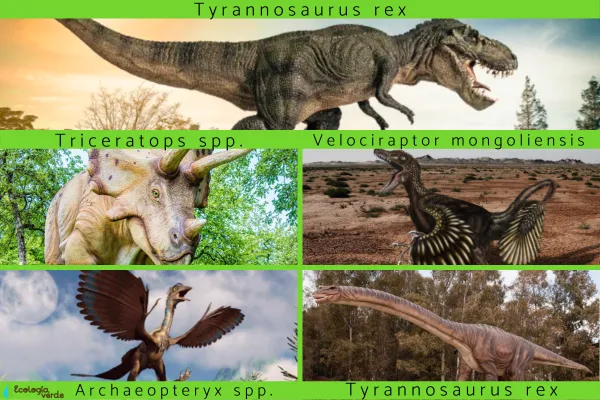Dinosaurs—often referred to as "terrible lizards"—are a fascinating group of prehistoric animals that first appeared on Earth around 230 million years ago. For more than 130 million years, they dominated terrestrial ecosystems as the most diverse and successful group of vertebrates. However, a mass extinction event known as the Cretaceous–Paleogene extinction, approximately 65 million years ago, wiped out most dinosaur species.
But how many species of dinosaurs actually existed? In this article, we’ll explore the number of identified and estimated dinosaur species, the main taxonomic classifications of dinosaurs, and the most famous species discovered to date.

The first dinosaur fossils were discovered in the early 19th century, and paleontologists have been uncovering new species ever since. These massive, often bizarre creatures have long fascinated scientists and the public alike. Today, their skeletal remains are still a highlight in museums around the world.
Thanks to extensive paleontological work, scientists have officially identified about 1,000 distinct species of dinosaurs. However, this number is only part of the story—many more species likely remain undiscovered.
While approximately 1,000 species are known to science, estimates suggest that between 1,700 and 1,900 dinosaur species may have existed throughout the Mesozoic Era.
This means around 700 to 900 species are yet to be discovered. Some may still lie buried in unexplored fossil beds, while others may never be found due to decomposition or geological processes that prevented fossilization.

Dinosaurs are generally classified into two broad taxonomic groups based on the structure of their pelvic bones:
Saurischians had hip structures similar to those of modern reptiles like lizards and crocodiles. This group appeared during the Late Triassic Period and diversified through the Jurassic and Cretaceous periods. It includes two major subgroups:
Theropods: Bipedal, carnivorous dinosaurs like Tyrannosaurus rex and Velociraptor, characterized by sharp teeth and clawed feet.
Sauropodomorphs: Herbivorous, quadrupedal giants like Brachiosaurus and Apatosaurus, known for their long necks and tails.
Despite the name, birds did not evolve from ornithischians. These dinosaurs had pelvises that resembled those of modern birds. They lived from the Late Triassic to the end of the Cretaceous and were exclusively herbivorous. Many, like Triceratops and Stegosaurus, lived in herds and developed body armor or horns for defense.
To learn more about dietary-based classifications, check out our related articles on:
[Herbivorous Dinosaurs: Names, Types & Features]
[Carnivorous Dinosaurs: Names, Types & Features]
Here are some of the most iconic and scientifically significant dinosaurs discovered so far:
Perhaps the most famous of all dinosaurs, T. rex was a massive carnivorous saurischian that lived in what is now North America. It grew over 10 meters (33 feet) long and weighed more than 5 tons. With a powerful bite and keen senses, it was an apex predator of its time.
Belonging to the ornithischians, the genus Triceratops includes two known species: T. horridus and T. prorsus. These herbivores had three distinctive facial horns and a large protective frill. Their fossils have been unearthed in Canada and the United States.
One of the swiftest dinosaurs ever, Velociraptor could run up to 65 km/h (40 mph), making it an efficient carnivorous hunter. Its fossils have been found in Central Asia, particularly Mongolia.
Archaeopteryx represents a crucial evolutionary link between non-avian dinosaurs and modern birds. Though it had traits of theropods—such as teeth and a bony tail—it also had feathers and wings, allowing it to glide short distances. Fossils have been discovered in Germany and North America.
This may not be the best-known dinosaur, but it is the largest discovered so far. Patagotitan mayorum measured about 40 meters (131 feet) in length and weighed around 70 tons. It was discovered in the Chubut Province of Patagonia, Argentina.

While scientists have identified around 1,000 species of dinosaurs, estimates suggest nearly 2,000 may have roamed the Earth. Many species remain hidden in undiscovered fossil beds, or have been lost forever to time. Each new discovery sheds more light on the complexity and diversity of the dinosaur kingdom.
Curious about why dinosaurs went extinct? Be sure to check out our article: [Why Did Dinosaurs Go Extinct?]
Related Articles:
[List of Dinosaurs by Period]
[Dinosaurs Found in Argentina]
[How Paleontologists Discover New Species]
[The Link Between Birds and Dinosaurs]
Bibliography
Currie, P. J., & Padian, K. (Eds.). (1997). Encyclopedia of dinosaurs. Elsevier.
Norell, M. A. (2019). Patagotitan mayorum. The World of Dinosaurs: An Illustrated Tour, Chicago: University of Chicago Press, pp. 156-159.
animal tags: dinosaur species
We created this article in conjunction with AI technology, then made sure it was fact-checked and edited by a Animals Top editor.